No Fixed Abode: Fear of a $160 Planet

It sounds like a sci-fi novel, or maybe even a Fredrick Forsyth knockoff written during the Seventies heyday of Cold War action/adventure books: Six Months of the Equinox. You can imagine the plot, right? Something happens to freeze the planet’s orbit at a certain point. The seasons stop. Mayhem ensues. There’s a machine that might be able to restart the orbit, but a cabal of Russian oligarchs makes a plan to seize it. Only one man — let’s call him Chest Rockwell — can save us.
The reality behind the title is nearly as frightening: It’s the half-year that my current wife, known to all and sundry as Danger Girl even though (SPOILER ALERT) she is actually old enough to vote, traded in one of her Tahoes for a Chevrolet crossover in an attempt to balance her budget. This is the kind of thing that I typically associate with bubbleheads who can’t do math, but Danger Girl is a CPA with extensive financial training. Was she right to do it? It’s a relevant question, because — as you’ll see below — it’s one that we could all be asking ourselves three years from now.
$COST = (Miles_driven/average_mpg) x average_fuel_price
Any third-grader could work this out, but most people are surprisingly reluctant to actually do it. I’ll show you a few real-life examples:
2012, when I drove my Town Car about 3200 miles a month:
(3200/19) x 3.45 = $581
2017, when I drove my Accord just under 12,000 miles because I had several other vehicles in the rotation:
(950/27) x 2.25 = $79.16
That’s a $502/month swing, which is real money to most of us. In fact, you could get yourself a whole new car for that kind of cash. But most of the variable isn’t actually due to the car, as we see if we plug the Town Car into my 2017 driving plan:
(950/19) x 2.25 = $112.50
All of the sudden it looks mighty stupid to swap cars just to realize that savings.
Danger Girl’s situation in 2012 was remarkably similar to mine. She was driving more than 2,500 miles a month during New Mexico’s record-high fuel costs, with a Tahoe that rarely beat 15 mpg.
(2750/15) x 3.70 = $678.33
The four-cylinder Equinox offered some immediate relief:
(2750/28) x 3.70 = $363.39
That’s $300/month, which in 60-month loan terms is about $17k, which meant that she could bury a lot of negative equity in the Tahoe while still saving money. As fate would have it, she wasn’t that upside down in her truck, so she realized some immediate rewards from switching to an Equinox that was also cheaper than the Tahoe.
As a native New Mexican who had spent much of her life on and around tribal land, Danger Girl had never in her life driven a unibody FWD vehicle before the Equinox. She did not like it. Luckily for her, the cost of fuel took a pretty sharp dive about half a year after she took delivery. That, combined with a form of fusion a career advance, put her squarely back behind the wheel of a Tahoe Z71. (Raise your hand if you get the reference — we don’t do much subtlety on the Internet anymore, so I’m putting it in bright lights.)
In the long run, the cost of swapping vehicles twice pretty much swallowed any fuel or payment savings derived from Six Months of the Equinox. But it’s worth noting that it took a deus ex machina in the form of much lower fuel prices to change the outcome of her story. Had fuel stayed at nearly four dollars a gallon, she would have been wise to stay in her CUV. It’s also worth noting that the Equinox was hugely popular during that period of American history, to the point that some dealers had waiting lists for four-cylinder models. Danger Girl wasn’t the only person doing the math — and some people weren’t really doing the math at all, but simply recoiling from the visceral horror of repeated $100 fillups.
Every time fuel prices go up in this country, there’s a flurry of trade-in activity as people attempt to balance their books with a change in vehicles. The question is: under what circumstances is it justified, and will those circumstances return?
It’s no surprise that oil is a volatile commodity. Still, you might be surprised to see that the actual price peak wasn’t during the fabled Seventies “energy crisis” but rather just a decade ago. The question is, simply: what happens next?
There’s no shortage of speculation, but there does appear to be a broad-based consensus that for the first time in a long time we have a real correlation between oil price and supply. The advancements in shale mining and other technologies now mean that there is quite a bit of oil out there. Nobody’s talking about having passed “Peak Oil” any more. But this technology is expensive to develop and even more expensive to operate. There are costs that we have yet to adequately address or even understand — insert stories of flammable drinking water here.
To all of the above, add the slightly ironic fact that the last cultures to “kick the oil habit” will suffer the least from energy costs. One forecaster thinks that electric-vehicle and alternative-power technologies will depress oil prices to less than half of what they are today. That means 99-cent gasoline, which means it’s time to buy that used S600 Benz you’ve had your eye on and turn up the boost while you’re at it. The last people to leave the petroleum party will have the best time. It’s that FOMO you had as a curfewed child, cranked up to weapons-grade intensity.
It seems reasonable to me that oil prices will eventually rise to the level where alternative extraction methods are profitable — that seems to be somewhere in the $65 range according to even this optimistic assessment. The next question is what the dollar will do. My general impression, which will be roundly criticized by the armchair economists of TTAC, is that the dollar-denominated prices of assets and commodities appear to be on the rise. I don’t think you’d be foolish to bet on fuel prices for the year 2020 that are 30 to 50 percent higher than they are now.
For most American drivers, covering between 10,000 and 15,000 miles a year, the real effects of choosing a fuel-efficient vehicle start to become apparent at the $3/gallon price level. That’s where you save $150/month or more driving a Civic or a Prius instead of a Tahoe or GLS450. It’s also where people start to see $75 fillups in trucks and SUVs, which is a critical point from an emotional standpoint. Given that fuel costs on the coasts are already there much of the time, it’s no wonder that people are still buying hybrids in California and New York.
The worst part about $3/gallon gasoline, however, is that it suggests the impending possibility of $4/gallon gasoline, which suggests that the gasoline is going to run out. Our European and Asian readers, as well as some Canadians, will point out that they’ve been at those levels for years — to which I say: yes, and that’s why your vehicle mix is so different from ours.
Like it or not, the domestic automakers have some tough questions ahead. Now that the full-sized truck is the default vehicle of American consumers, they need to get the mileage of those vehicles under control. It’s a repeat of 1975, when all of a sudden it became critical to get more than eight miles per gallon out of a full-sized sedan, which was the style at the default vehicle of the time.
Here’s the good news. The fuel crisis brought us the finest American cars in history, namely the 1977 B- and C-body General Motors sedans. If gas prices head for the ceiling again, you’ll see a drastic re-engineering of the full-sized truck. It will become more efficient. Smaller. More capable. Just plain better. That’s a good thing. And if it happens quickly enough, it might even keep the domestics from collapsing. So if I worked at a Big Two Point Five automaker right now, I’d be drawing a full-sized truck that walks back the massive growth of the past 20 years. And I’d have solid plans to put it into production on 18 months’ notice.
The alternative is to experience another catchy action-novel title, and I have just the right one for the occasion: Ten Years of the Prius.

More by Jack Baruth
Latest Car Reviews
Read moreLatest Product Reviews
Read moreRecent Comments
- Kwik_Shift_Pro4X I fell asleep looking at that image.
- Verbal Rented a Malibu a while back. It was fine, if a bit gutless.I get that Detroit wants to go all-in on high profit margin SUVs and blinged-out MAGA trucks. Everyone has known for decades that they can't compete on price in the affordable sedan space. So now all of Detroit's sedans are gone except for a couple of Cadillac models.But you'd think that just one of the domestic brands could produce a fun, competitive and affordable sedan. Just one? Please? Anyone? Bueller?
- 3-On-The-Tree I wouldn’t even use Ford as a hearse for fear of being late to my party.
- SCE to AUX Norway is in Europe, and Tesla is an American automaker - no problems there.I wouldn't use Ford as the bellwether.https://www.reuters.com/business/autos-transportation/tesla-extends-lead-norway-evs-take-record-82-market-share-2024-01-02/https://elbil.no/english/norwegian-ev-policy/
- Steve Biro If the U.S. government wants to talk about banning all connected cars - or at least the collection and sharing of information from said vehicles - I’m all ears. Otherwise, don’t waste my time.
















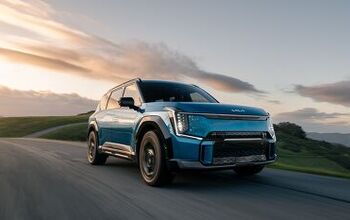
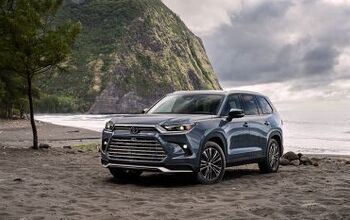
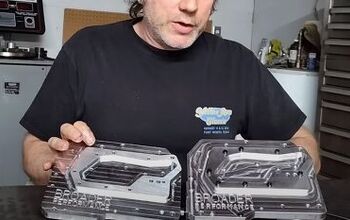
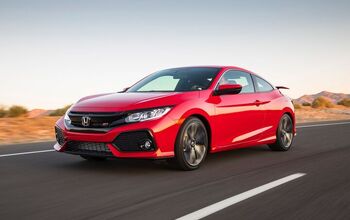



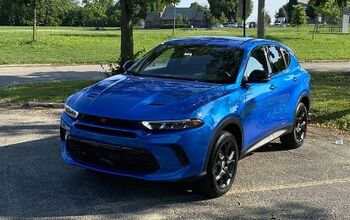
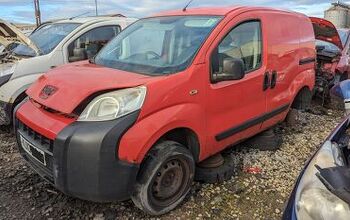

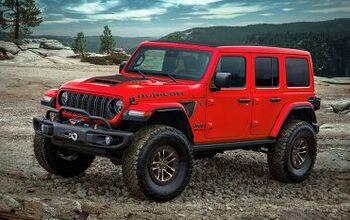
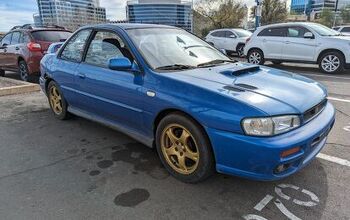
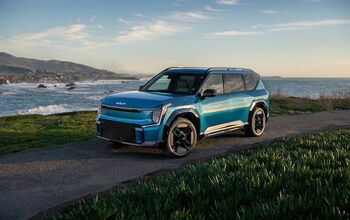
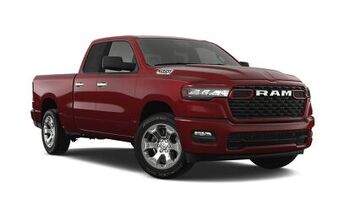

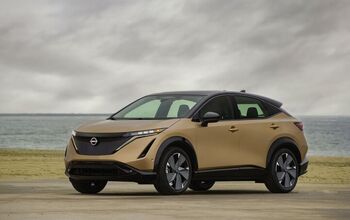

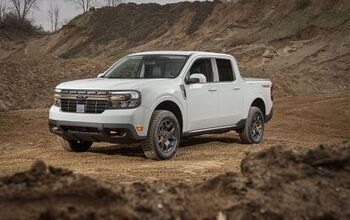
Comments
Join the conversation
Please continue buying the big Tonkas. I just added some OXY shares to go along with XOM shares held long-term. I need the dividend income. Thank you.
1997 Ford F-150 SuperCab short box 4x4 L 222.3”, W 79.5”, H 75.1” 2017 Ford F-150 SuperCab short box 4x4 L 231.9”, W 79.9”, H 76.9” ...massive growth?